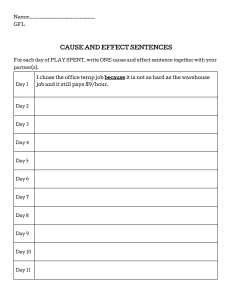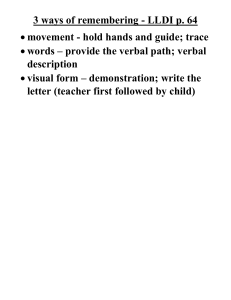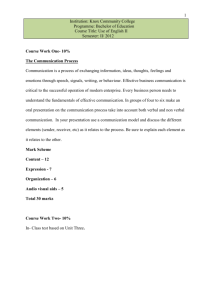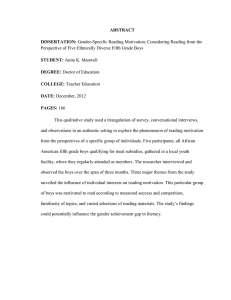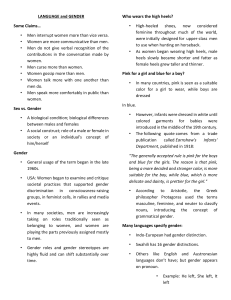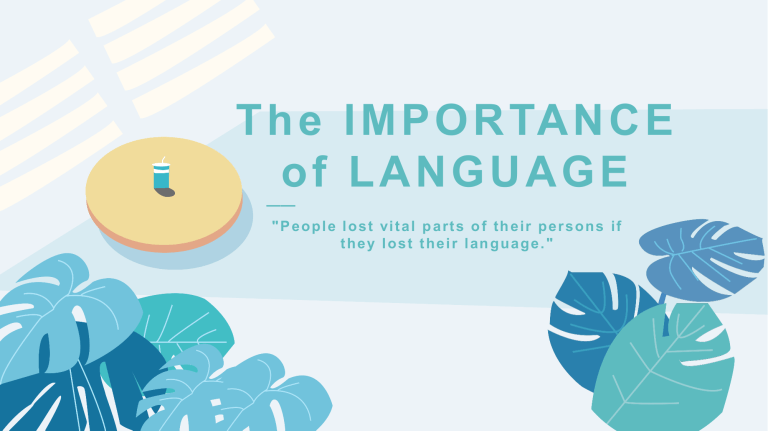
T h e I M P O R TA N C E of LANGUAGE —— " P e o p l e l o s t vi t a l p a r t s o f t h e i r p e r s o n s i f they lost their language." LANGUAGE Language is a system of conventional or written symbols through which human beings, as members of social groups and participants in their culture, communicate. In other words, it says language is a system of communication through which human beings express themselves. "Language is a speech sound produced by human beings to express their ideas, emotions, thoughts, desires, and feelings." - Aristotle tuffet curds and whey 1 Language is vehicle for the transmission of culture. “The most important relationship between language and culture that gets to the heart of what is lost when you lose a language is that most of the culture is in the language and is expressed in the language.” WISDOM LITERATURE GREETINGS PROVERBS SONGS CURSES PRAYERS RIDDLES PRAISES L A N G U A G E CULTURE 2 Language is our major mode of communication. • Language is a distinctly human activity that aids in the transmission of feelings and thoughts from one person to another. • Among people, language is the primary means of communication. It is through language communication, spoken or written, that we are able to share our ideas, opinions, views, and emotions with another person. Don’t speak, but WHISTLE. 3 Language gives us our identity. • Social interaction and ways in which people use particular linguistic expressions that reflects dialect patterns of their speech community. Studies shows that many languages have subtle nuances in linguistic usage, such as greeting patterns and even in their speech patterns, their age, gender, and status are manifested. • Accordingly, there is language of the youth, language of the rich and famous, language of the nobility or language of the “common tao.” 4 Language paves way for continuity of traditional culture. • Language holds the intricate memory and information for thousands of years and is the vehicle for the transmission of culture. Since language is a visible and powerful indicator of group’s identity, it has accurately been recognized as an important way to maintain links with one’s cultural past and to protect one’s cultural uniqueness in the present. • When a language dies out, future generations lose a vital part of the culture that is necessary to completely understand it. 5 Language create gaps and caused discrimination. • Certain masculine language that connotes importance in society such as managers, political leaders, and managers that are often referred to as male jobs. While certain female associated works that connotes incompetence and low status create wider gap between these sexes as well as discrimination. • Language plays a vital role in helping people build a bridge of relationships. At the same time, language acts as a destroyer of bridges of human relations because it separates people from each other. 6 Language is not confined solely on verbal language. • Non verbal communication that is usually lumped into kinesis (body gestures), proxemics ( study of manipulation and meaning of space) and paralanguage or non verbal) sometimes convey an even a stronger message than words can do. Non verbal communication varies across the world, but some appears to be universally understood and or only understood by certain groups who created them. “ACTION SPEAKS LOUDER THAN WORDS.” Gender-Fair Language is language that avoids bias toward a particular sex or gender and therefore is less likely to convey stereotypes. AIM OF GFL Gender-fair language (GFL) aims to reduce stereotyping and discrimination based on gender. Two main strategies have been used to make languages gender-neutral and treat women and men symmetrically: Neutralization and Feminization. Neutralization : is achieved, for example, by replacing male-masculine forms (policeman) with gender-unmarked forms (police officer). "humanity" or "humankind" instead of "mankind" "manufactured," "machine-made" instead of "manmade" Feminization - use of feminine forms to make female referents visible Example: (the applicant… he or she instead of the applicant… he) Studies showed that consistent use of GFL like in the story telling and use in the messages or text utterances increase the probability of GFL. Language policies have been successful in incorporating role nouns with men and women in putting gender stereotyped jobs in their mental representations. Guidelines provided to promote gender equality through language: Guidelines provided to promote gender equality through language: SE XISM in L ANGUAGE: It is the use of language which devalues members of one sex, almost invariably women, and thus fosters gender inequality. It is inherently discriminatory language, either written or spoken, that implies an unjustified sexual bias against a group or an individual, usually women, but sometimes men. The identification of sexist language and the need for a change to nonsexist forms have long been topics of controversy. Ways on how SEXISM in language foster gender inequality and devaluates WOMEN. THE WAY WE TALK TO CHILDREN: This is setting us up to believe that the female lot in life is based on her looks, while strength is promoted as a masculine feature. Girls are taught that they should sit nicely and quietly, while boys are rewarded for being energetic. Ways on how SEXISM in language foster geder inequality and devaluates WOMEN. The “RUN LIKE A GIRL” phrase: Women are put down by referring to them as ‘girls’. This suggests they are small, young and innocent. In contrast, men are linked with ideas of strength and suitability. They are generally only referred to as boys to suggest a playful aspect; ‘boys will be boys’, ‘playboy’, or ‘old boys’ club’. Thank you! ——
